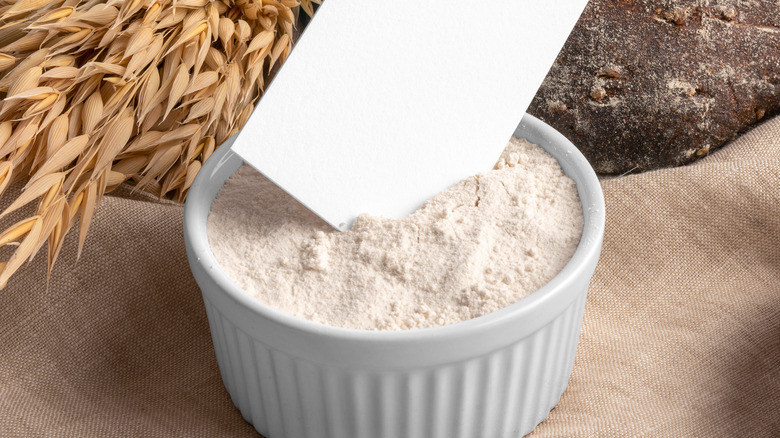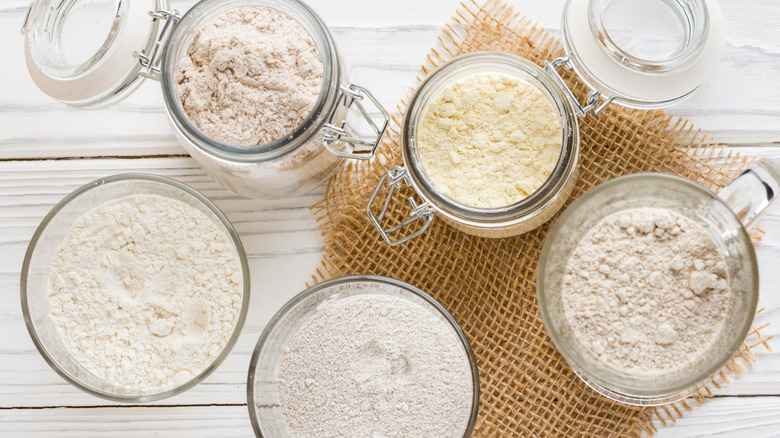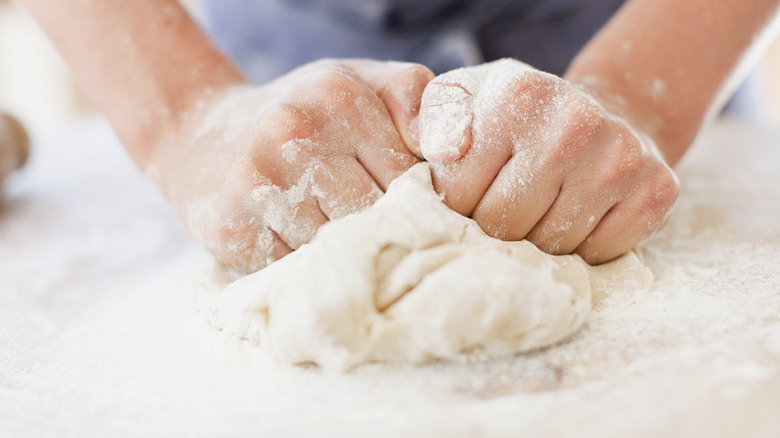The Only Ingredient You Need To Make Bread Flour From All-Purpose
If you're an avid baker, you probably have already noticed that most grocery stores are stocked with several types of flour. There's whole wheat flour, cake flour, self-rising flour, all-purpose flour, and more. Different varieties have different uses, and using the right kind of flour can be the secret to transforming many baked goods from just okay to truly spectacular. If it's bread you're making, using bread flour helps to maintain a solid crumb structure and gives dough a chewier texture. These factors make bread flour ideal for breads, pizza dough, pretzels, and other yeasted recipes.
Even though bread flour is recommended for these types of baked goods, it's okay if the next time you want to make soft pretzels, all you have on hand is all-purpose flour. When that's the case, you don't have to sacrifice your dough's coveted chewy texture. Instead, you can remove 1 teaspoon of flour for every cup of it you have. Then, mix in the same amount of wheat gluten. The result is a quick substitute when you don't have bread flour.
To understand why this trick works, it helps to know the differences between all-purpose flour and bread flour. It is also helpful to know a couple of other substitutes you can use if you're ever in a baking pinch.
What's the deal with bread flour vs all-purpose flour?
Although all-purpose flour and bread flour might look the same at first glance, a closer look reveals an important difference: protein content. Bread flour has the highest protein content of all types of flour, with 12% to up to more than 16% protein; all-purpose flour contains from 9% to 12% protein. More protein means more gluten, more gluten means more elasticity — or chewiness — in your dough.
When you mix water with the proteins in the flour, gluten forms. Gluten is what leads to the elasticity and structure of your bread, helping give you that airy texture that most of us look for in bread. When you don't have as much gluten, you can wind up with a denser crumb and bread that doesn't rise as high. The reason that using all-purpose flour with a bit of wheat gluten added to it works is that it puts back in some of the protein to help you get the right texture and shape for your bread.
Other bread flour substitutes to try
Adding wheat gluten to your all-purpose flour isn't the only quick fix to reach for when you don't have any bread flour. Another solution you can use is to replace bread flour with whole wheat flour. This variety has more protein than all-purpose flour does, which can help get you the structure you're looking for in breads. However, it also has quite a lot of fiber in it and is better at absorbing moisture, which can increase the risk of baked goods being a bit dry.
Besides whole wheat flour, you can also give semolina flour a whirl. Semolina flour is made from durum wheat, andhas a high protein content, which means that it can work as a substitute for bread flour in a pinch. You might want to note that semolina has a distinctive, slightly sweet flavor which could affect the taste of baked goods.
There are also substitutions you should avoid. Cake flour, for instance, is low in protein and won't achieve the chewy texture you're looking for in breads or pizza crusts. Still, now that you've got a couple of bread flour substitutes up your sleeve, you're on the right track to making tasty baked goods even when you don't have exactly the right ingredients on hand. Adding wheat gluten to all-purpose flour or using a different type of flour when you don't have bread flour are solid options.


